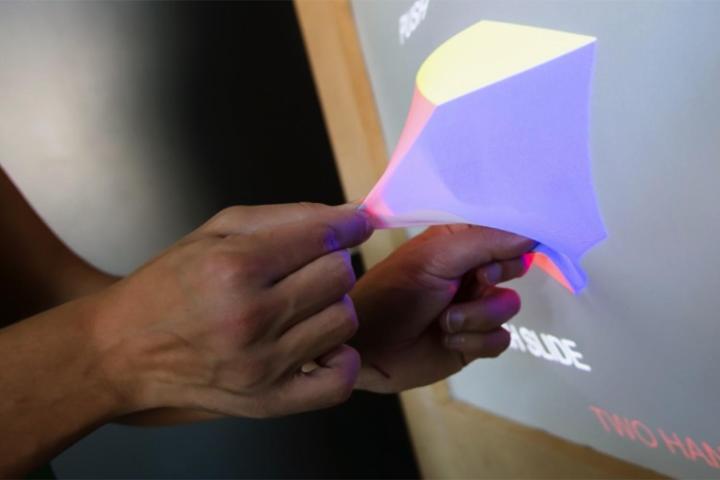
So what can we do? Make displays with sizes and shapes we can change, of course.
This is what the European backed research group has been working on for the past two years. It’s developed various systems to allow for a real, physical interaction between the user and what’s shown on the display, according to Phys.org. For example, by using ultrasound levitation, the group has been able to project the display out of the panel. When that is combined with a deformable screen, users are able to literally reach into the screen’s “space” and interact with what’s there.
In one demonstration, called Emerge, the GHOST project showed a user reaching into a bar graph to manipulate the levels. While this sort of thing might also be possible with augmented or virtual reality, neither of those technologies provide the same physical feedback and touch response.
The potential is there for “reactionary” display reforming too. Examples given include an ATM adjusting its screen to prevent those nearby from reading a pin code as it is input, or to create real walls and valleys in a game environment.
The team has also discussed the technology’s potential for smartphone or tablet screens, which could be configured to conform to the shape of a map’s topography. However the developers admit that that level of malleability is still many years away. Although they believe that within the next five years we could see the first displays that can conform to the shapes that we choose, deeper uses of the technology will take much longer.
Do you think GHOST tech will be able to compete with virtual and augmented reality?
Editors' Recommendations
- You Asked: 3D VR, QDEL technology, and TV size vs. quality
- Apple Vision Pro brings TV, 3D movies to a massive, 100-foot-wide screen
- Sony’s new 3D display tech keeps getting bigger and better
- You can overclock the Ryzen 7 5800X3D, but it’s still risky
- New 3D smartphone technology could change photography, experts say




